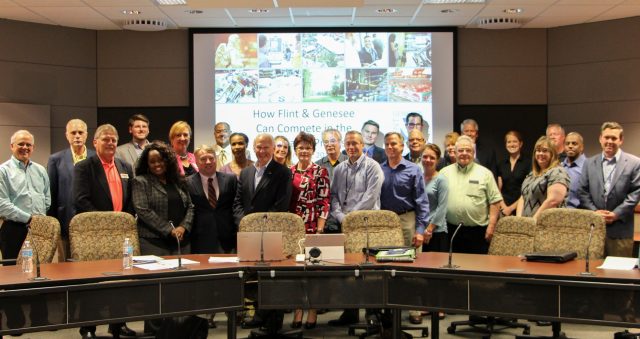Recently, a nationally renowned, Dallas-based site consultant met with representatives of various economic development agencies in Flint & Genesee to learn how our region can improve its competitiveness in the site selection process. The following is an edited transcript of the conversation with Tim Feemster, President & CEO, Foremost Quality Logistics.
The following is an edited transcript of the conversation with Tim Feemster, President & CEO, Foremost Quality Logistics.
What should our partners know about the site selection process and what it takes to be competitive?
First, you must understand the variances in industry sectors. For example, warehouse-and-distribution does not have the same cost structure or importance of profile elements as does manufacturing or data centers or customer service centers or corporate relocations. Even within warehouse and distribution, these vary based on the requirement of speed to market. In responding to RFPs, you can’t cut-and-paste a corporate relocation answer into a warehouse-and-distribution response without sounding to the client/prospect like you don’t understand the industry or their business.
Second, total landed-cost analysis is also key in the equation. Supply chain costs typically are 60-plus percent transportation while non-labor warehouse costs, like rent/taxes/utilities, are only 4-6 percent, unless the facility is highly automated. For manufacturing, due to automation and the high cost of equipment, it is also different than warehouse and distribution, and labor is a higher cost component as well.
Third, availability of buildings is typically the first choice of the warehouse-and-distribution search.
Fourth, land is not a site. Sites are either certified or already part of a development that is serviced by all utilities and roads. Without approved plans for utilities and road infrastructure to that piece of dirt, it’s typically too risky or too long to startup for my clients.
To become more competitive, what are some of the factors that we should focus on?
Think as the client thinks. What do they hold as important? In order to attract that type of client, you have to set up a “community” to mirror their ideal location. Not necessarily easy or even cost effective to do. You can’t be all things to all people.
How do responsiveness, quality and cost play into the site selection process?
First, responsiveness is critical to the overall process. Our clients typically keep us to a timeline while delaying decisions or answers back to us all the time, making our demands to the ED (economic development) community seem ridiculous. We do not sit on requests until the last minute, unless our client is not responding. Sounds like there is a dual standard and there is.
Second, without responsiveness, there will be very few wins.
Third, quality has many meanings.
- Quality of life is seldom an issue in a warehouse-and-distribution project since 95-plus percent of the workforce already lives in the community. Not true on a corporate relocation.
- Quality of the workforce is very important and the sustainability of future workforce needs may be even more important, if the initial workforce can be generated from closures or hiring underemployed workers.
- Quality of the building availability may make or break a local for a project. Lack of industrial infrastructure can be a fatal flaw, as the “start date, lead time” may not exist for a build to suit.
- Quality of the schools and how they interact with the business community to generate future workers is sometimes a deal-breaker.
To become more competitive in the site selection process, what’s one thing our team can start working on together?
The ability to truly collaborate in solving problems and remain on the same page for problem-solving as a local/regional/state organization. If one entity strikes out on its own or they tell “different stories,” it may very well kill the deal.
